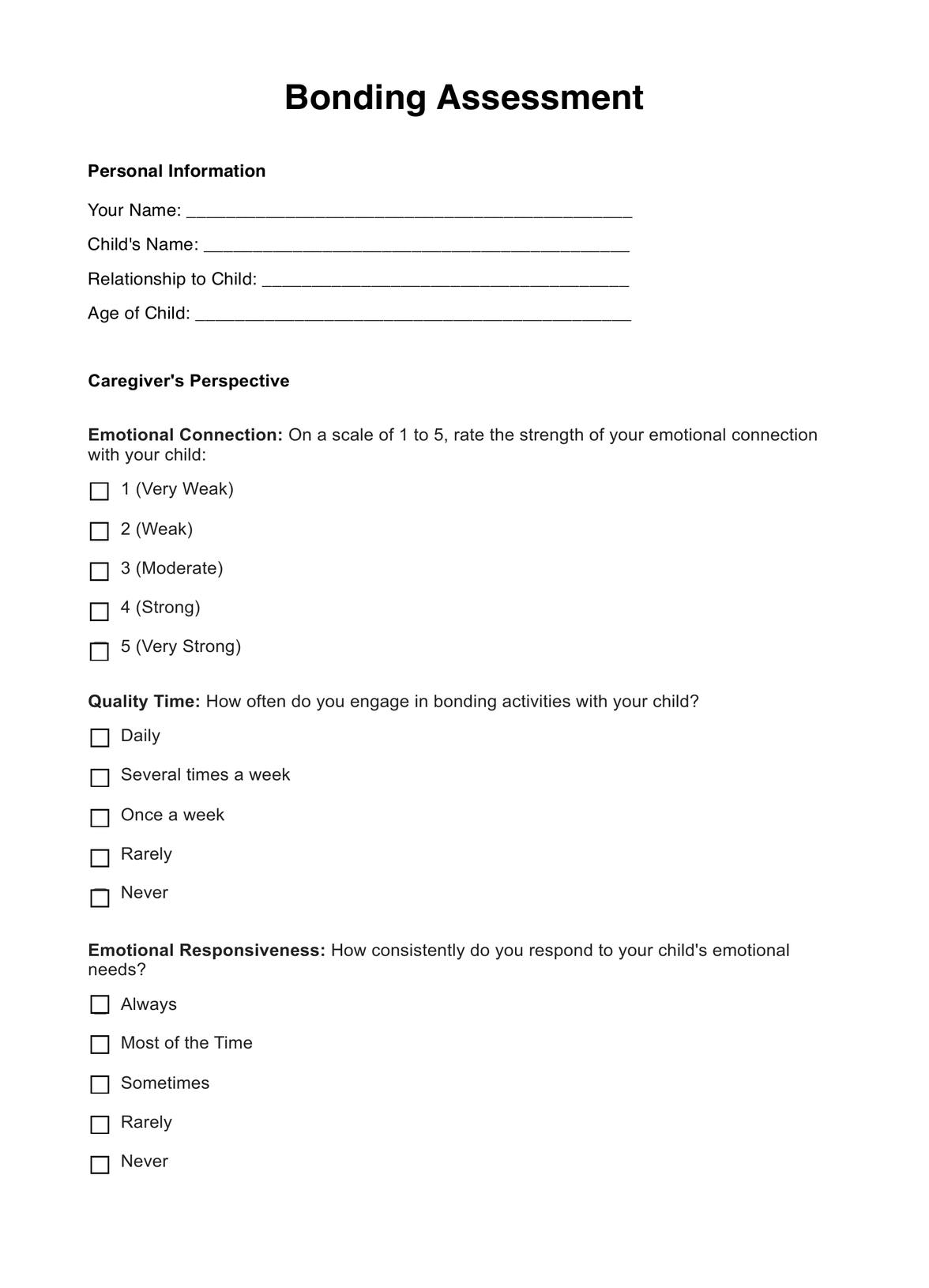The Bonding Assessment finds utility among various professionals, including psychologists, social workers, child development specialists, pediatricians, family court judges, and foster care agencies.

Bonding Assessments
Enhance relationships and child well-being through bonding assessments. Discover how professionals use these tools to understand parent-child dynamics.
Bonding Assessments Template
Commonly asked questions
Bonding assessments are employed in diverse scenarios, such as when child safety is a concern, during adoption or foster care placements, when parents seek parenting guidance, when addressing child behavioral issues, and in the evaluation of developmental disabilities.
The application of bonding assessments varies based on the assessment type and purpose. Generally, they encompass self-report questionnaires, interviews, and observations. Questionnaires gauge caregivers' perceptions of the parent-child relationship, interviews explore interactions and emotions, and observations observe parent-child dynamics. Assessment outcomes identify potential relationship issues, aiding in crafting interventions for improvement.
EHR and practice management software
Get started for free
*No credit card required
Free
$0/usd
Unlimited clients
Telehealth
1GB of storage
Client portal text
Automated billing and online payments











